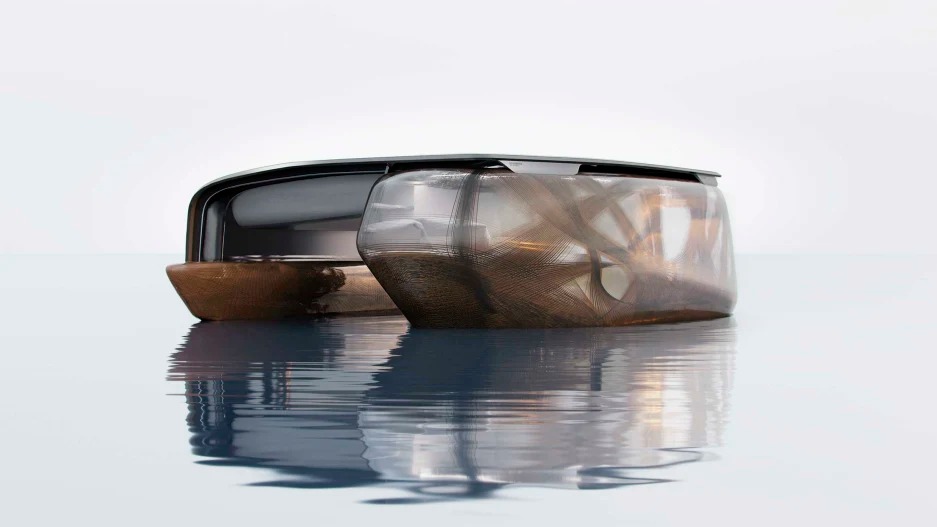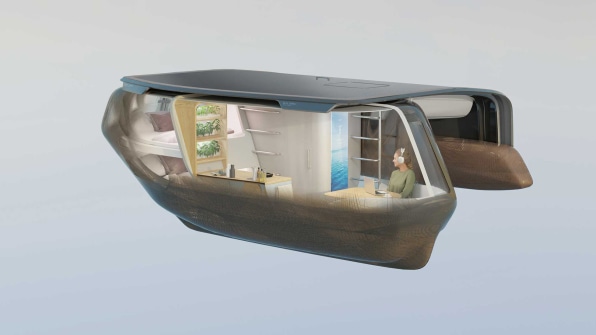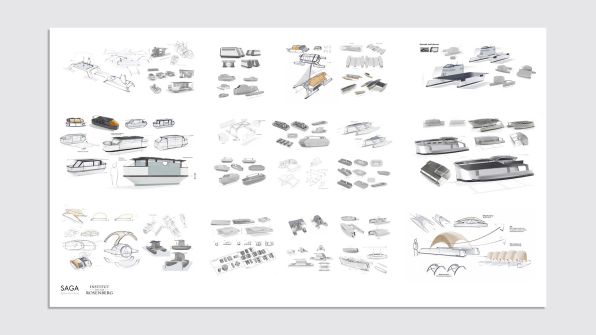- | 10:00 am
This floating home may be the future of housing
The structure, which was created by students in Switzerland, is solar-powered and was designed to float in the ocean.

As the world’s population rises and the climate crisis worsens, secure and affordable housing becomes increasingly difficult to find. Solving this problem was the prompt given to a group of children ages 6 to 18.
Students at a Swiss private school designed a floating habitat, the Blue Nomad, aimed at providing housing alternatives for the future, particularly in case of natural or man-made crises. They designed the ocean habitats with the help of engineering experts and will exhibit the full-scale prototypes for the first time this summer.

It would be a strange assignment for most students, but it’s typical of projects at Institut auf dem Rosenberg, a prestigious boarding school in St. Gallen, Switzerland. Though founded in 1889, it adapts to fit the modern age with a continuously changing curriculum. Today, the school focuses on coursework with real-life impacts and classes that aim to incorporate human value into a world dominated by tech, robotics, and AI.

“What is being taught in traditional schools is boring,” says Bernhard Gademann, the school’s headmaster and director, adding that learning by rote memory just to pass exams isn’t effective nowadays, “because any machine will be able to do that better than human beings.”
Over the course of six months, the entire school came together to create a vision for the Blue Nomad. Students were given angles into the project that were age appropriate and fit their interests, from engineering to humanities. Some studied historical precedents, inspired by similar Polynesian nomadic structures. Others studied buoyancy and the physics behind the system.

They collaborated to design the Blue Nomad, a floating habitat made from weaves of flax fiber, plus other sustainable materials like algae tiles and cork walls for insulation and fire resistance. It’s covered with 48 large solar panels to provide energy for propulsion, electricity, and food production. It can accommodate two people and two guests but is modular, so multiple units could be fused together to create shared living spaces, with the potential of building a floating village or city.

The idea is that, because 70% of the world is water, it provides a huge platform for additional housing if land becomes overpopulated or irreparably damaged by climate crises. And in the case of natural or man-made disasters, the shelters could be delivered rapidly and effectively via water; at approximately 22 by 16 feet, they’re narrow enough to fit through locks and channels common in European waterways. They also may suit certain individuals on a permanent basis if they prefer to live sustainably in the “tiny home” model.
The school regularly works with industry experts, from Boston Dynamics to architect Sir Norman Foster; this time, students were helped by SAGA Space Architects, a Danish tech design agency focused on building habitats for Earth and space. The school previously worked with SAGA for its Space Habitat, a 3D-printed, 23-feet-high structure that would house two people and fit inside SpaceX’s Starship rocket. The company provided 3D image scanning and AI to help generate design proposals.
The team is building the actual prototype to scale, and it will be unveiled at two events this summer: the London Design Biennale in June and the Monte Carlo Energy Boat Challenge in July. The aim is to secure financing to develop the homes further. “Ultimately, we always want to want to make sure that something can exist in real life,” Gademann says.
When they make the prototype, they’ll furnish the interior, with a goal of providing compact but comfortable living, with space for two double beds on two stories; an outdoor courtyard with seating; a bathroom with plumbing; and a kitchen with standard appliances plus a water filtration system and an aeroponic tower for growing vegetables. There will be smart LEDs embedded into the ceiling, and a steering unit with digital navigation. (The school declined to share a cost to build the prototype.)
Then, in late 2024, they hope to take it on a maiden voyage: a two-month trip across 3,000 kilometers of the North Sea, which would require one megawatt of solar energy (enough to power 750 homes at once). They won’t risk putting students on it—rather, the “crazy guys [from SAGA] who I think will be very, very keen to go on the high seas with this vessel,” Gademann says.






































